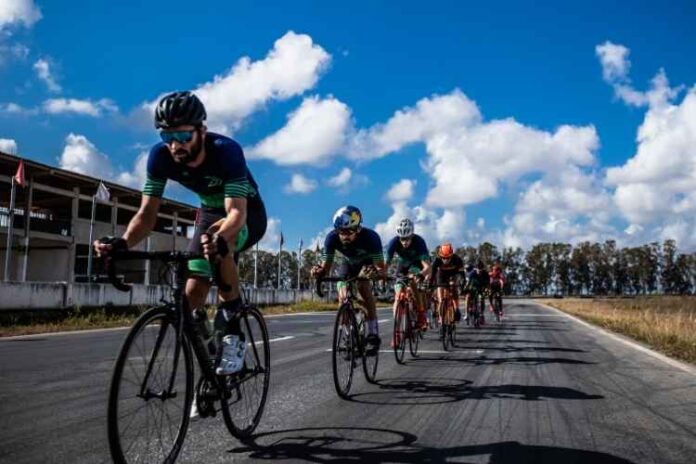Put the pedal to the metal! Roughly 870,000 Americans commute to work on a bicycle every morning. Thousands of others use bicycles for exercise or to run errands.
Bicycling lets you burn more calories and use more muscles in your body than running or walking. Yet you shouldn’t just jump on a bike and start pedaling. You should follow a few cycling tips so you can truly enjoy the benefits of cycling.
What tools do you need for good workouts? What exercises should you perform? How can you improve your bicycling over time?
Answer these questions and you can become the next great bicyclist in no time. Here are nine tips you should follow.
1. Purchase Biking Gear
As you might imagine, the most important piece of gear for cycling for beginners is the bike itself. You should get yourself a bike or an elliptical that you are comfortable sitting on for a long period of time.
If you plan on taking your bike on the road, you should get a vertical bike rack hitch. The hitch should keep your bike off the ground without banging into your car.
You must get a helmet, knee pads, and elbow pads to protect you in case you get into an accident. You can get cycling glasses to protect your eyes from debris, but you should be able to see out of them properly.
2. Get Good Cycling Clothes
Cycling is extremely difficult if you don’t have the right clothes. Cycling shorts give your legs and hips flexibility, and they don’t create chafing. You can wear leggings if you want to remain warm during cold weather or cover your skin up.
You should wear cycling shoes that have holes so you can move your feet easily and get air on your feet. They should fit around your feet, but they shouldn’t be too tight. Try out a pair of shoes before buying them.
3. Start With the Motion of Cycling
As you are learning how to cycle, you may be tempted to challenge yourself and bike at high speeds. But this can strain muscles in your legs and exhaust you.
Focus your initial efforts on mastering the motion of cycling. Get acquainted with pumping your legs and keeping your back straight. Try not to lean forward, as leaning can affect how you push and pull with your feet.
4. Change Your Exercises
You should do the same exercises for the first few cycling sessions. But once you have biking essentials down, you should transition to other exercises.
If you’re focusing on endurance, you should try exercises that increase your stamina. Go for a tempo ride during which you cycle for one hour while increasing your speed slightly. You should feel a little uncomfortable while you cycle, but you should develop an ability to go harder for longer.
5. Try Cross-Training
Cross-training is not cycling, but it can help you build muscle and prepare for other exercises. Yoga poses can help you stretch and be more flexible for long cycling sessions. The locust pose helps you stretch your chest, shoulders, and thighs.
You can also perform strength-training exercises like squats and step-ups. You can prioritize your legs, but building muscles in your back and stomach can help you while you cycle.
6. Go Outside
Try to bring your stationary bike outside. Going outside can keep you from becoming bored and let you get fresh air while you go cycling.
You should also try cycling on an actual bicycle. This helps you develop your balance and endurance, especially when going up hills or around corners.
You should adjust how you exercise when you go outside. You must wear reflective gear that allows drivers and other bicyclists to see you as you are riding.
7. Add Hills
Hills force you to work harder, adjust your speed, and strengthen your leg and back muscles. As you’re learning how to cycle outside, you should start with small hills. Make sure you walk up a hill before you ride on it so you know if you have to avoid any obstacles.
Once you’ve figured out how to bike up that hill, you can move on to another one. Try to bike while you are on smooth roads, as biking on rocks can cause you to lose your balance.
8. Add Speed Intervals
You should experiment with speed intervals, pumping your legs at a faster rate for ten minutes. Try doing one interval for every hour of cycling you do.
Do not push yourself too hard, even if you want to increase your stamina significantly. After your interval, you should do a recovery period during which you cycle at a slower speed than normal. You can also take a break so you relax your muscles.
9. Bike in a Group
Biking in a group can help you make connections and give you the motivation you need to ride. You can go with friends or join a cycling program with a professional trainer. If you don’t have a group you can go with, you should contact your local cycling store to see if the store organizes a group.
Figure Out Great Cycling Tips
Cycling tips are simple yet profound. You should get a premium bike, helmet, and padding so you remain comfortable while you ride.
Get the essentials of cycling down before you improve your speed and endurance. You should also combine cycling sessions with strength training and cross-training.
You can hone your skills as a cyclist by going up hills and trying out intervals. When you need a little motivation, you should find a biking group.
These tips are just the basics. You can improve your skills by studying cycling in detail. Read more bicycling guides by following our coverage.


